Don’t ever make the mistake of dismissing a product because it has been around for many years. There is usually a reason for that and in the case of the Linear Tube Audio MZ3 — it is because it does what it was designed to do and more if you have the budget for better quality sources.
LTA has a new headphone amplifier called the Velo (which I have tried, but not enough to render a verdict) and DAC that will be available soon and I suspect that the hi-fi press will move on from the MZ3 — but that won’t be me in this particular moment; a parent is about to lose a very difficult battle with Parkinson’s and I’m not ready to let go so easily.
The Porterhouse

I was tempted to call this system the “Impossible Burger”, but I think that is a great disservice to the Linear Tube Audio microZOTL MZ3 which is neither a solid-state or tube amplifier.
The LTA MZ3 is a reference level headphone amplifier, pre-amplifier, and integrated amplifier packed into a desktop-sized package that offers the best of both topologies. If you’re staring at the image of the MZ3 and focused on the top panel which clearly shows off its compliment of 4 vacuum tubes, you would be incorrect if you think it sounds anything like a traditional tube amplifier.

It does not. Not even remotely.
Does it demonstrate the ability to infuse almost every type of recording with immediacy, texture, detail, and a rather impressive degree of space?
Almost always.
The MZ3 can be transparent, detailed, and colorful at the same time if the rest of the system is up to the challenge.
The “integrated amplifier” part of the equation only outputs a single glorious watt of power.
One. Not even 1.5.
The rear panel has two sets of outputs, and three single-ended inputs which is a lot for a desktop amplifier.
Its tonal balance works well with a lot of headphones from brands like HiFiMan, Audeze, Dan Clark Audio, and Meze Audio. You don’t have to spend $3,000 on a pair of headphones to experience what the MZ3 is capable of.
But I will tell you that the experience with something like the Meze 109 Pro or Empyrean II is breathtakingly wonderful. Perhaps even better than most comparable hi-fi systems if you don’t have the space for one.
But getting there requires better quality sources and an excellent DAC.
DACs or Network Streamers?
I’m old enough to remember a period during the 1990s when Stereophile and TAS browbeat audiophiles into believing that their digital audio setups couldn’t deliver 16-bit/44.1kHz worth a damn if they didn’t own digital separates.
A proper audiophile owned both a CD transport and DAC because audiophile CD players on their own couldn’t dig out the magic present on those expensive MoFi, DCC, JVC XRCD, and Sony Mastersound CDs; let alone the 0000s of non-audiophile quality CDs being released every single year.
Raise your hand if you fell for that bullshit.
Guilty as charged.
Audio Note, Sonic Frontiers, Proceed, and EAD did very well when I succumbed to the power of the mob.
But what would I buy today if building out this system to its fullest potential?

The Holo Audio Spring3 Kitsuné Tuned Edition (KTE) may not make a lot of sense to some with network amplifiers and wireless speaker systems integrating some rather high-end DACs in 2024, but this might be one of the finest external DACs that we’ve ever heard; and that includes a few that are 10x the price. The Spring3 KTE is an R2R Ladder DAC that supports hi-res PCM and DSD.
The Holo Audio Spring3 KTE measures 16.9″W x 2.2″H x 11.8″D and weighs 18 lbs. Inside its solid case constructed from copper and black-anodized aluminum, are two entirely separate, fully balanced converters: a 24-bit, discrete R-2R for PCM, and a discrete resistor network to handle DSD up to DSD512.
The USB and I2S inputs accept PCM data up to 32-bit/1.536MHz and DSD512, and the S/PDIF inputs up to 24/192 and DSD64. The outputs are balanced (XLR) and single-ended (RCA). The Spring3 rests on silicone-damped copper feet.

Connected to a CD transport or streamer, this DAC makes music come alive. If you’re wondering if it makes sense to spend this kind of money on a DAC when digital technology is evolving so quickly, the answer is that a great DAC doesn’t lose its value as a component just because something new comes out.
90% of available digital music is red book CD quality (or less) and the 10% that qualifies as high-resolution digital audio will always be supported by this DAC.
If streaming platforms like TIDAL, Deezer, Spotify, or Qobuz are your primary sources of digital music – the Spring3 KTE will allow you to uncover a lot of great sounding music for years to come.
The timbral accuracy is second to none, and there is a level of resolution that you might not expect from a DAC that starts at $2,198 depending on the configuration (the level one unit is $2,198 USD).
A boutique online manufacturer, Holo Audio, is distributed by KitsuneHiFi, and even with the long wait time for delivery, this is one DAC worth waiting for. The Spring3 KTE retails for $3,098 and gives music listeners a real taste of what reference quality digital audio can sound like.
The Spring3 KTE USB DAC reproduces layers of detail, and offers a warm tonal balance, low noise floor, and superb top-to-bottom coherency.
The organic nature of its presentation with the DAC set to NOS mode, was some of the most beautiful sounding digital audio I have yet to experience; and I will not get sucked into the “analog versus digital” debate on this one.
A component either brings you closer to the musical experience or it fails in its purpose.
The Spring3 KTE DAC recreates the soundstage with excellent depth and width and the imaging is spot on; musicians and instruments are locked firmly in place.
I’ve heard some more incisive sounding DACs, but the extra degree of edge always becomes fatiguing and really doesn’t sound very natural with a lot of recordings.
Vocals and strings have so much presence and body that I felt a rather sadistic urge to torment my family with classical music on a nightly basis; I can’t explain why they show such little interest in Mozart, Dvorak, Shostakovich, or Stravinsky — but the Spring3 KTE had me sitting on the edge of my listening chair and converging with the power and emotional impact of the music.
The Spring3 KTE with the LTA MZ3 is such a special sounding set-up that I envy those who have already gone down this path with an excellent pair of headphones.
Another option can also be found from a manufacturer that is also based in Maryland.
The BorderPatrol SE-i DAC is also somewhat unconventional and works extremely well with the MZ3; this R-2R resistor ladder DAC offers no over-sampling and is limited to 24-bit/96kHz.
If you need support for DSD or higher bit/sampling rates – you would be out of luck. In reality, 97% of all recorded digital music is available below 24-bit/96kHz so we’re not sure how big of a loss that really is.
The SE-i compliments the tonal balance of the MZ3 with a slightly more organic feel to it and that’s a wise choice if you decide to go with a pair of high sensitivity loudspeakers or a pair of headphones that are slightly more analytical sounding.
The SE-i comes with a single USB input so you can use your laptop as your digital source device on the desktop if funds are tight. Run Roon or TIDAL/Qobuz independently as your streaming platform and you’re good to go.
But what about a network streamer?
Any high quality network streamer will work here; WiiM Audio Pro Plus, Bluesound NODE X, or even something like the new Cambridge Audio CXN100.

Having spent more than a month (off/on) listening to the CXN100 with the MZ3 and aforementioned Meze Audio headphones, what really stands out is the boldness and clarity of the presentation.
Having owned the Cambridge Audio Edge A Integrated Amplifier for over 3 years, and just reviewed the superb Cambridge Audio Evo 150 Network Amplifier — there is something really positive happening here with the CXN100.
Are the improvements over the now discontinued Cambridge CXN V2 really that significant?
Unless you are familiar with the “house” sound (which also includes the MXN10), it’s hard to point to things that really stand out — and this is one of those rare moments where I have heard everything in the stable in less than 6 months.
The CXN100 certainly sounds more energetic and detailed than the previous iteration, along with a higher level of resolution. The pacing is excellent and there is just enough upper bass and lower midrange coloration to keep things on the warmer side.
The overall interface and app are also better and easier to use.
$1,099 USD for this streamer combined with the LTA MZ3 is a really easy combination to recommend.
From Romania with Love?
$3,000 USD is a lot of money for a pair of headphones. $3,000 is a lot of money for most things if we’re being totally honest with ourselves.

I do remember the first time I listened to the Meze Audio Empyrean and walking away rather depressed that I could never afford them. Spending that kind of money on a pair of headphones felt very hard to justify.
With two kids in college soon, spending that kind of money on the Meze Empyrean II (review coming next week) also feels like a bridge too far; but I still might do it later in 2024.
I also remember meeting Antonio Meze at CES many years ago and thinking that he was a genius for walking around the show and giving attendees the opportunity to listen to the Meze 99 Classics that quickly became the talk of the Head-Fi community.
With almost no marketing budget, this tiny Romanian company flew across the pond and took a chance; their success has not been a fluke and when you look at the myriad of headphones and IEMs that they have brought to market over the past 7 years, it is clear that they know how to engineer some of the best headphones in the world and that they love what they do.

Meze Audio is a small company and their resilience in the face of the pandemic and Russian invasion of Ukraine which impacted their partners at Rinaro Isodynamics, who are based in Lviv, tells you everything you need to know about their entrepreneurial spirit and creativity.
The 99 Classics may have been the product on which they cut their teeth, but the original Meze Audio Empyrean (was $2,999, now $1,899) changed everything in the high-end headphone space for a lot of people.
Audeze and Focal did not see the Empyrean coming and its success forced both to go back to the drawing board and focus on how to build something superior.
Meze pushed forward with customized iterations of the Empyrean and eventually introduced the $4,000 ELITE (read our review here), but an updated version of the award-winning headphones was long overdue according to some.
For their second-generation model, Meze Audio’s specialists have further refined the Isodynamic Hybrid Array driver design from Rinaro Isodynamics, delivering a step-change performance.
“When creating Empyrean II, our goal was to enhance the headphones’ ability to reproduce fine details and achieve a more neutral sound signature, all the while preserving the original “easy to listen to” character. With this in mind, our engineers have masterfully harnessed the driver’s power to reveal new possibilities in terms of responsiveness and accuracy and even make the driver more reliable in challenging acoustic environments,” explains Meze Audio’s Managing Director,
Mircea Fanatan.

Featuring the most advanced ear pads in the Empyrean series to date, the all-new Duo ear pads are bespoke to Empyrean II. Crafted from a precise blend of premium leather and Alcantara, they introduce a contemporary look and tone.
With leather forming the base half and Alcantara covering the rest, these earpads deliver a harmonious tonal balance that resonates across all music genres.
The benefit of the angled Alcantara ear pads is that it creates more space inside the ear pad, which translates to an airier sound signature, with cleaner bass and improved midrange presence.
Having spent a few weeks with the Empyrean II, my initial thoughts are that the headphones are superior to the award-winning headphones that are now heavily discounted (whilst supplies last) — but I do have thoughts to share.
The clamping force needs to be stronger; my rather large head loves how the headband adjusts naturally to its shape, but there is too much movement on my specific pair when I walk around or shift my head rapidly.
The ability to change ear pads was a smart design choice and the Alcantara ear pads really do help improve the spaciousness of the sound; which was already a huge strength of the original design.
Bass notes are also very strong and well defined.
The MZ3 drives the Empyrean II extremely well, but I have noticed that my hand keeps reaching for the volume dial and moving it higher with certain genres of music.
Could the Bryston BHA-1 that we just reviewed and awarded our “Editor’s Choice” Award for 2023 be a better match? Possibly.
But it’s impossible to deny the clarity, soundstage width and depth, detail retrieval, and overall timbral accuracy of this combination.
If your budget is slightly larger, the Holo Audio Spring3 KTE DAC connected to a good network streamer or laptop takes this headphone amplifier to another level of performance.
If I didn’t have the space for loudspeakers, this system would leave one wanting for nothing. State-of-the-art performance for under $11,000 USD.
Where to buy:
- LTA MicroZOTL MZ3 – $3,700 at lineartubeaudio.com
- Meze Audio Empyrean II – $2,999 at headphones.com
- Cambridge Audio CXN100 – $1,099 at Crutchfield | Amazon
- Holo Audio Spring3 DAC KTE – $3,098 at Kitsune HiFi
Total Price: $10,896



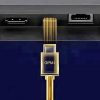
















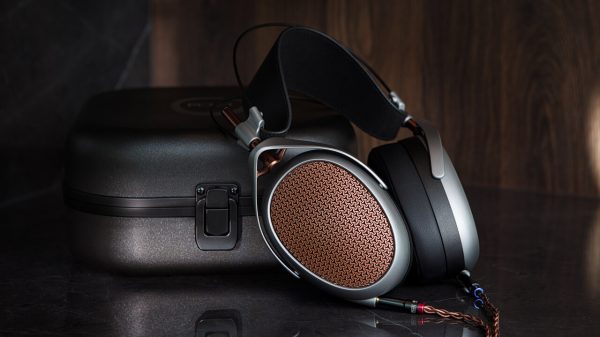
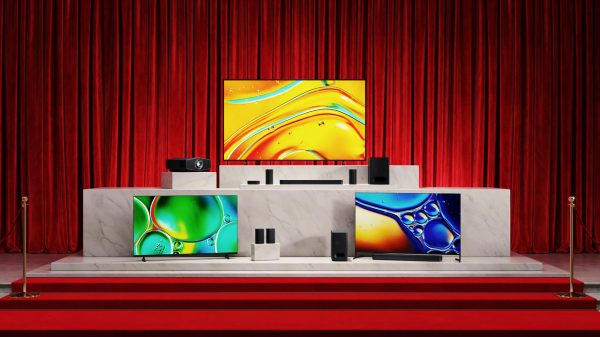










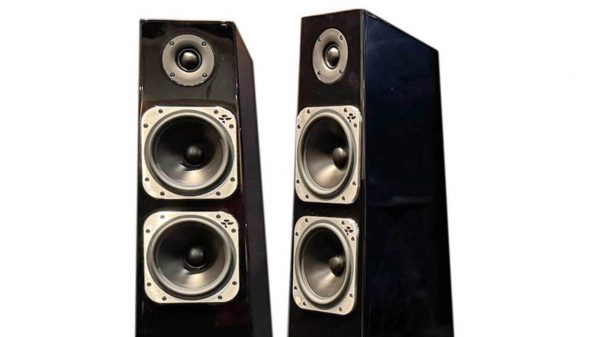
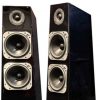











Asa
March 27, 2024 at 5:09 pm
Thanks for the reviews of an ever-expanding audio landscape. So many options.
Best of luck with family matters. My father’s wife succumbed to that awful condition…then he passed almost a year later with other health complications.
Shalom.